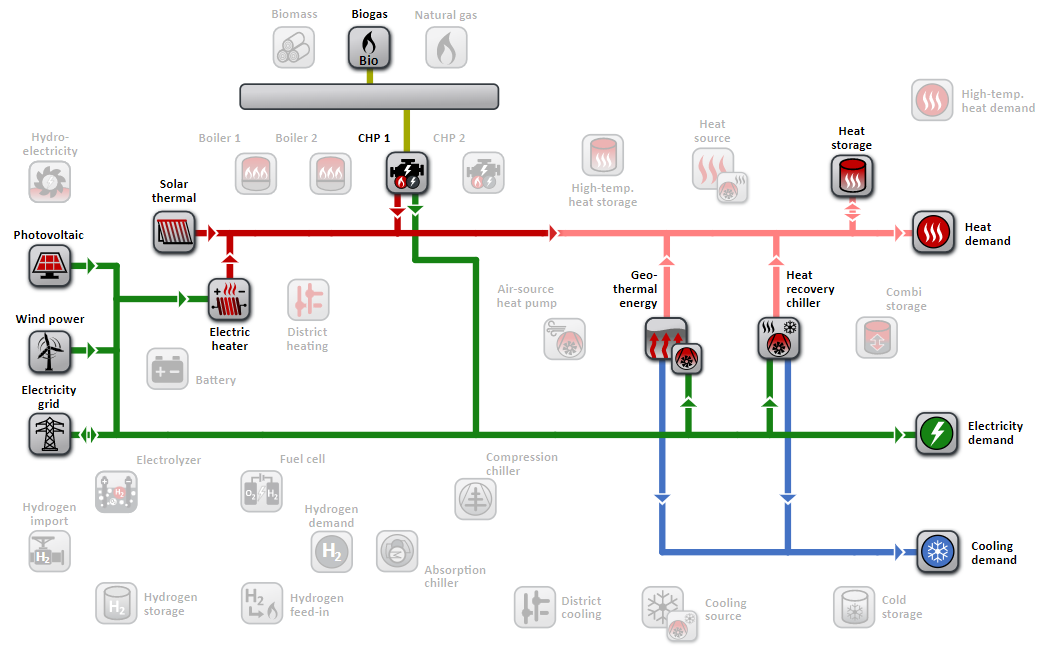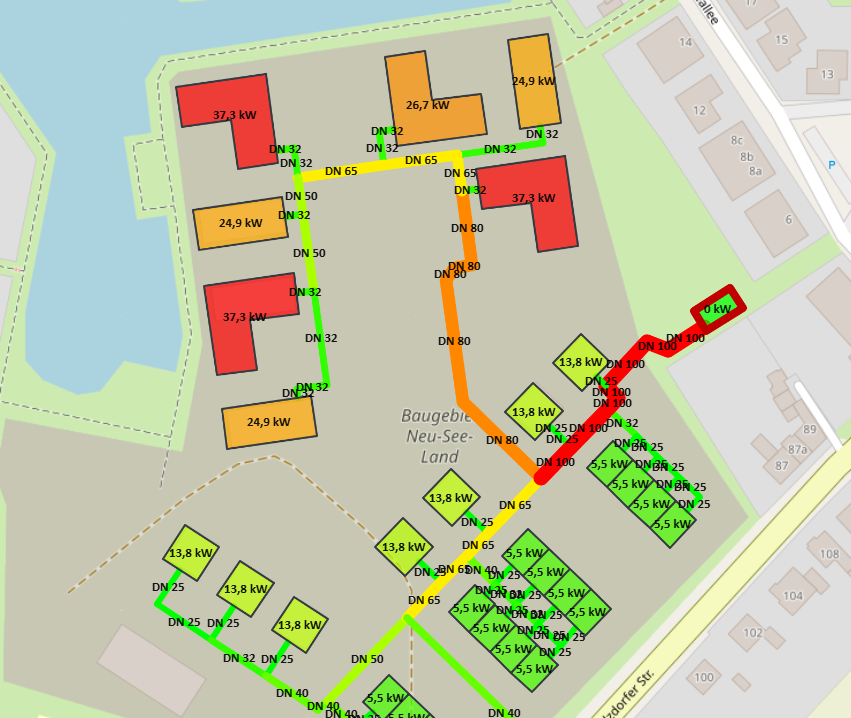nPro: Online tool for the simulation and planning of heat networks
Planning of efficient heat networks plays a central role in the decarbonization of districts. Suitable online tools help to estimate the potential and economic efficiency of heat network solutions and thus support the planning process.
Overview of software tools
This article explains the scope of the following calculation programs in the context of heat network planning:
as well as other tools for dynamic simulation of heat networks.
Programs and tools for heat potential demand analysis
In the development of a new heating network, there is a long chain of planning steps in which different software tools are used. At the beginning of the planning process, there is usually an analysis of the heat demand density. Here, heat maps are used to investigate which areas have a high heat demand density. A well-known tool for this is Hotmaps. Estimates of the economic viability of a heating network can be derived from the heat demand density. It should be noted, however, that for new network concepts, such as cold district heating (5GDHC networks), the heat demand density is no longer the decisive parameter. A high heat demand density indicates that a high amount of heat is taken per meter of heat network route and that the heat losses in the network are low compared to the heat demand. In these cases, a conventional heat network may be worthwhile. In the case of cold district heating networks, however, it is the case that they no longer have any heat losses at all. On the contrary, network temperatures are often kept below the ground temperature, so that heat gains from the ground into the pipe occur. Consequently, this means that cold district heating can also be economical for neighborhoods that have only a very low heat demand density. For cold district heating, therefore, the lower the heat demand density, the higher the relative heat gains in relation to the heat demand. Nevertheless, the investment costs of a heating network increase with decreasing heat demand density, so that an optimum heat demand density also exists for cold district heating. However, this optimum is at a significantly lower heat demand density than for conventional heat networks. In addition to the heat demand density, the supply of local heat and waste heat sources is also a decisive factor for the economic efficiency of a heat network.
Web tools for heat network planning
Once it has been decided in which area a heating network is to be established, initial considerations can be made regarding the route of the network and the specific development of heat sources. An energy concept must be developed and the economic efficiency must be estimated. Tools are suitable for this purpose, which make it possible to compare several system configurations with little effort and also include an economic analysis. For example, the tool Sophena can be used for CHP plants with boilers, CHP units and buffer storage.
Demand profiles are necessary for any energy system simulation. These are the basis for dimensioning and should therefore be carefully created individually for each neighborhood. The nPro tool is suitable for calculating demand profiles: nPro enables the creation of customized demand profiles with just a few clicks and includes space heating, domestic hot water, space cooling, process cooling, electricity and e-mobility. However, very specific demand profiles, for example of industrial sites, are problematic and usually not available. Another tool for the preliminary planning of heating networks is Thermos, which was developed in an already completed EU research project.

Calculation programs for dynamic heat network simulation and pipe dimensioning
Once the route has been specified and economically viable concepts for the heat supply of the heating network are available, a digital twin of the district or at least of the heating network can be created. This is essentially a detailed simulation model of the heat supply, which provides information about the dimensioning of the heat network (pipe diameter). Especially for complex heat networks, such as bidirectional cold district heating networks, it is important to model the operation for at least one typical design year. In this way, the dynamic pressure and temperature conditions in the network can be analyzed and changes in the heat network design can be made at an early stage. In addition to pipe diameters, this also concerns the installation depth or the quality of the thermal insulation. There are a number of different software tools that can be used in the design of the heat network. To get a first estimation of the pipe diameter, a functionality for automated pipe diameter dimensioning is available in nPro. Other software tools include modeling frameworks such as TRNSYS or Modelica, but these are usually too complex for heat network designers. Furthermore, there are software tools like STANET, EcNetz or THENA (Thermal Network Analysis): STANET is suitable for thermo-hydraulic simulation of pipe networks of different types. EcNetz is a program for calculating flow and temperature conditions in pipe networks with any topology and can simulate both compressible and incompressible media. THENA is an Excel-based calculation tool and can be used for a rough technical and economic estimation of heat networks.

This might also interest you
nPro software
Plan your energy system with nPro!

 English
English
 Deutsch
Deutsch


